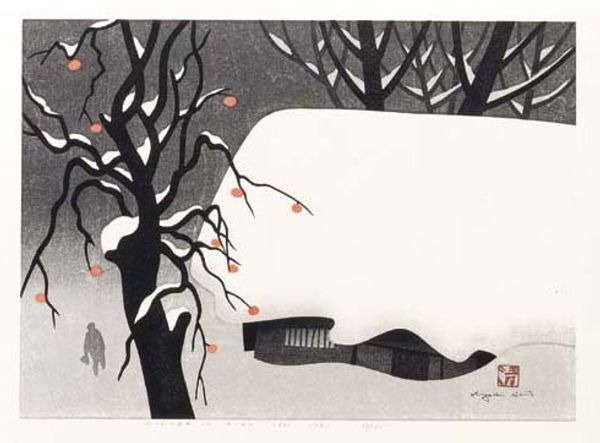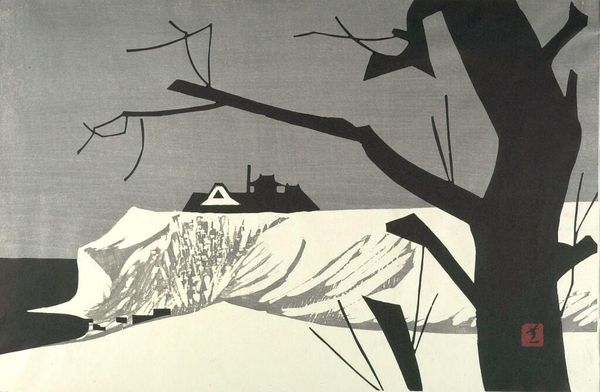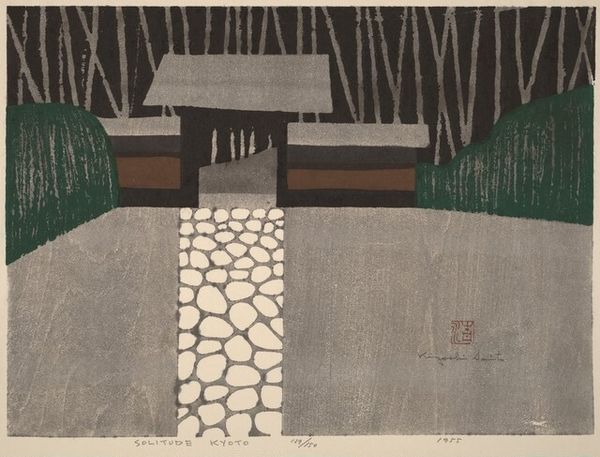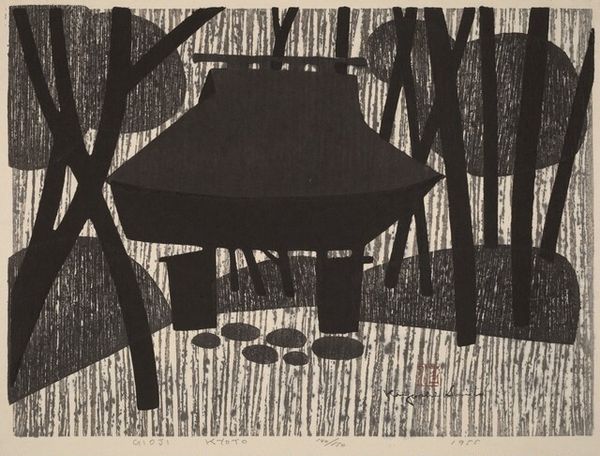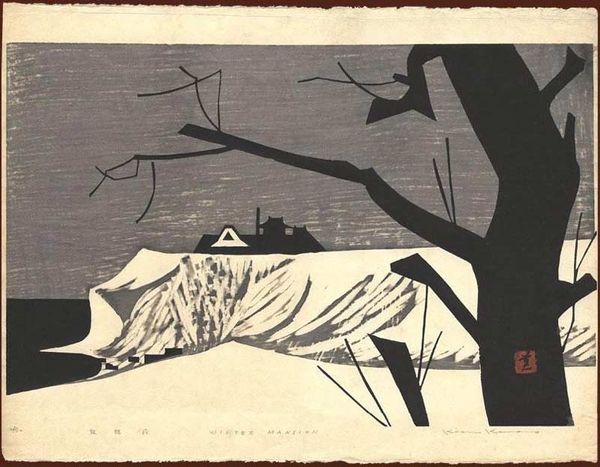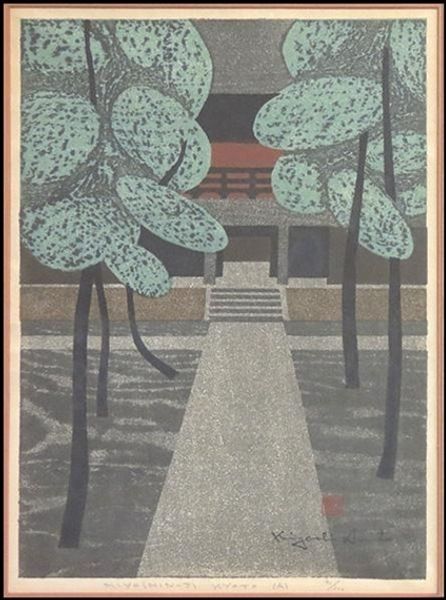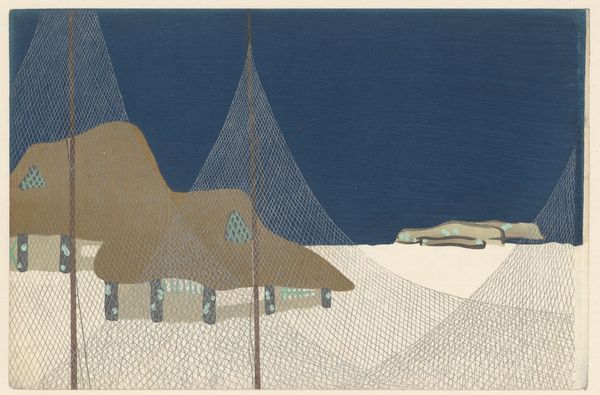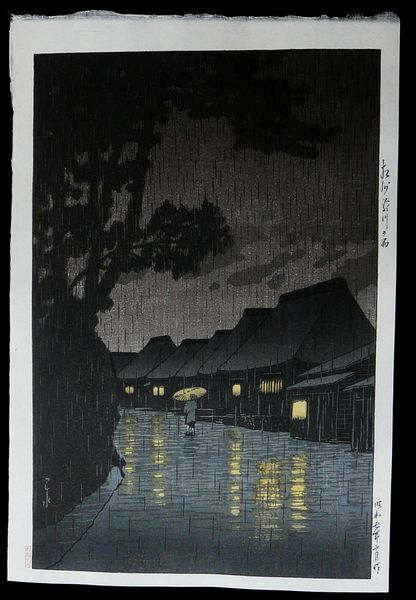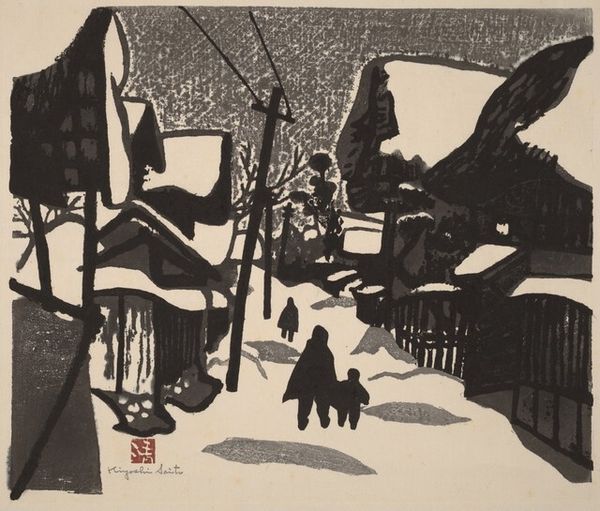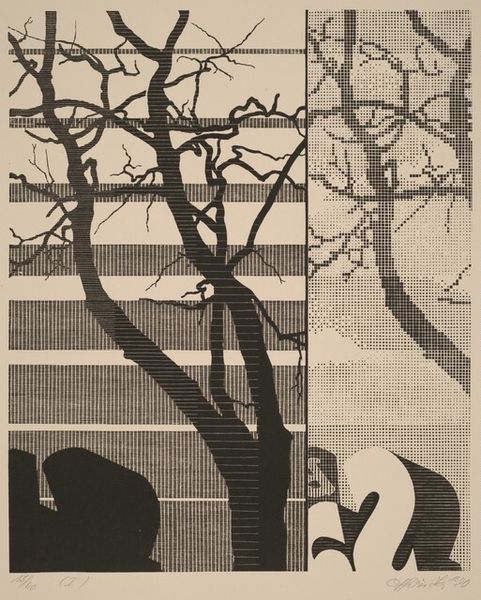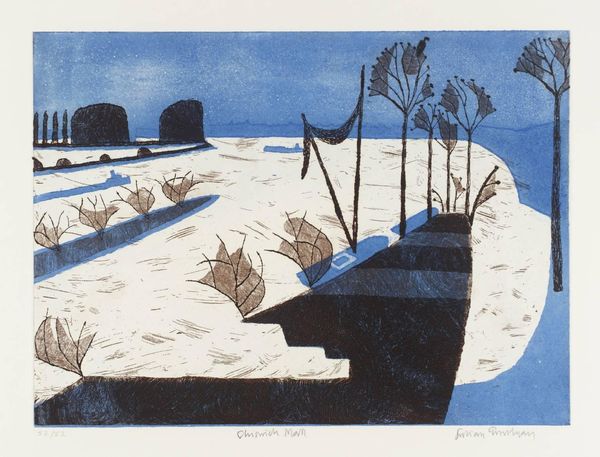
print, woodcut
#
stencil art
#
negative space
# print
#
landscape
#
ukiyo-e
#
geometric
#
woodcut
Copyright: Kiyoshi Saito,Fair Use
Editor: This woodcut print, titled "Ryoanji Kyoto," by Kiyoshi Saito, really strikes me with its calming yet austere geometry. What’s your interpretation of the print's significance? Curator: Looking at Saito’s process as a starting point is helpful. The ukiyo-e tradition involved collaborative labour, from the artist to the block cutter and printer, which shifted agency from a single artist. Saito’s move towards the sosaku-hanga ("creative print") movement, emphasizing the artist's sole creation, speaks to broader changes in artistic production, materiality, and cultural consumption during the mid-20th century. Editor: That's a fascinating point! So the very act of him creating the woodcut himself, cutting the block, printing…is a political act reclaiming the creative labor? Curator: Precisely! It redirects attention to the materiality and labor inherent to art making. Look closely at the print – what do you notice about Saito’s specific use of line and color? The carving of those lines, the layering of color… all hand-done processes Editor: I see a real tension between the stark geometric forms of the architecture, and the organic, almost chaotic, lines of the bare trees. The green is so pale! It almost seems bleached. Curator: Think about the type of wood he may have used. Its availability. Also, the cost of pigments post WWII may have driven the particular color selection. Does that altered material circumstance change your interpretation of that background? Editor: Absolutely. The choice of muted colors in a time of material constraint impacts the mood. I originally read the green as tranquility. Now, with that context, it reads more like survival or perhaps acceptance. I will think differently about the relationship between artistic intention and resource when I view works from now on.
Comments
No comments
Be the first to comment and join the conversation on the ultimate creative platform.
